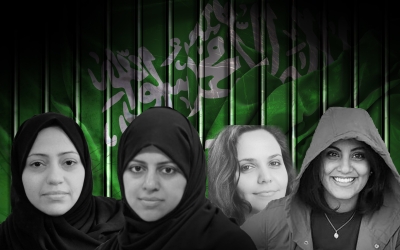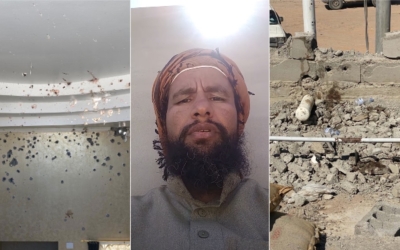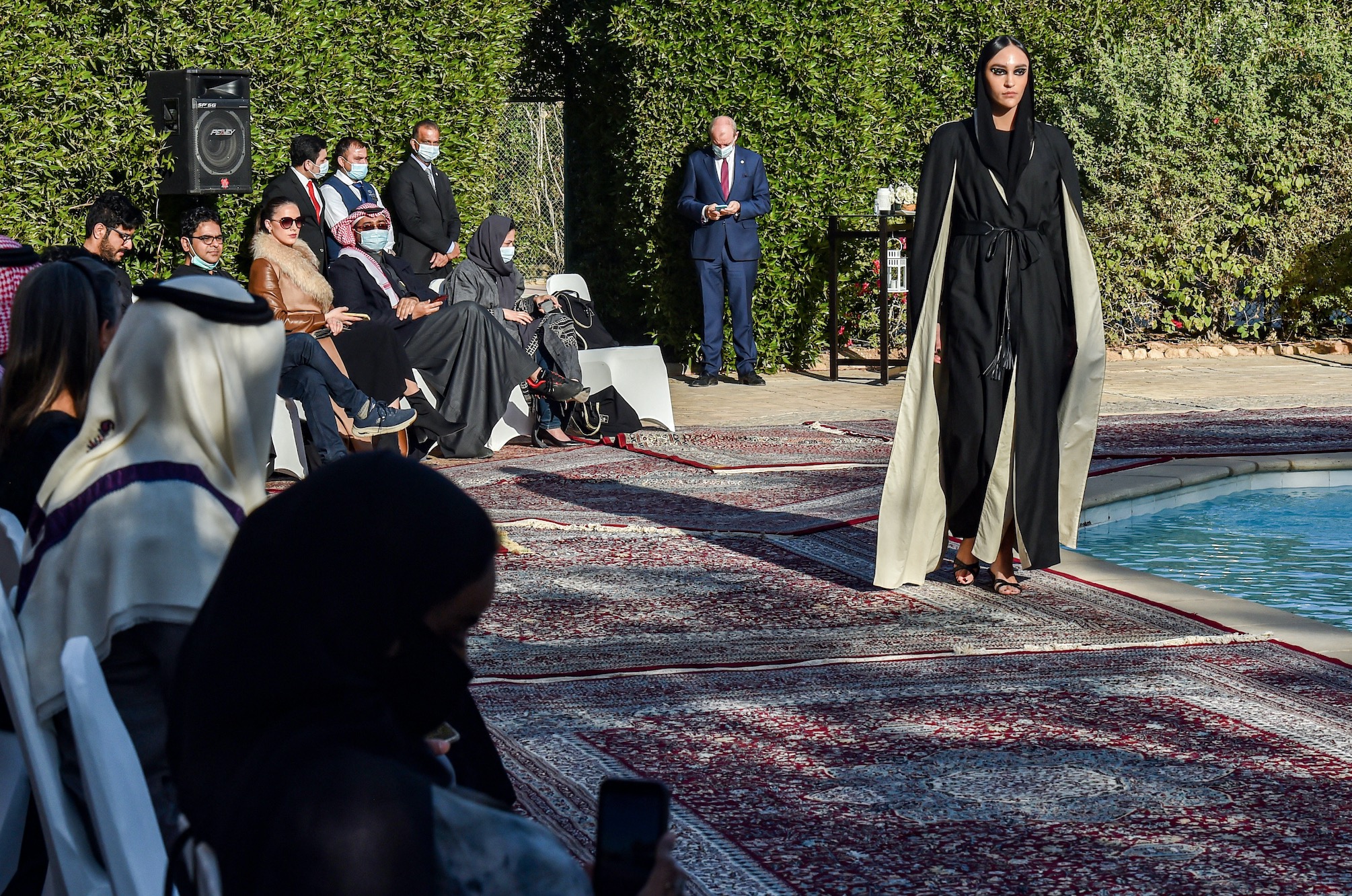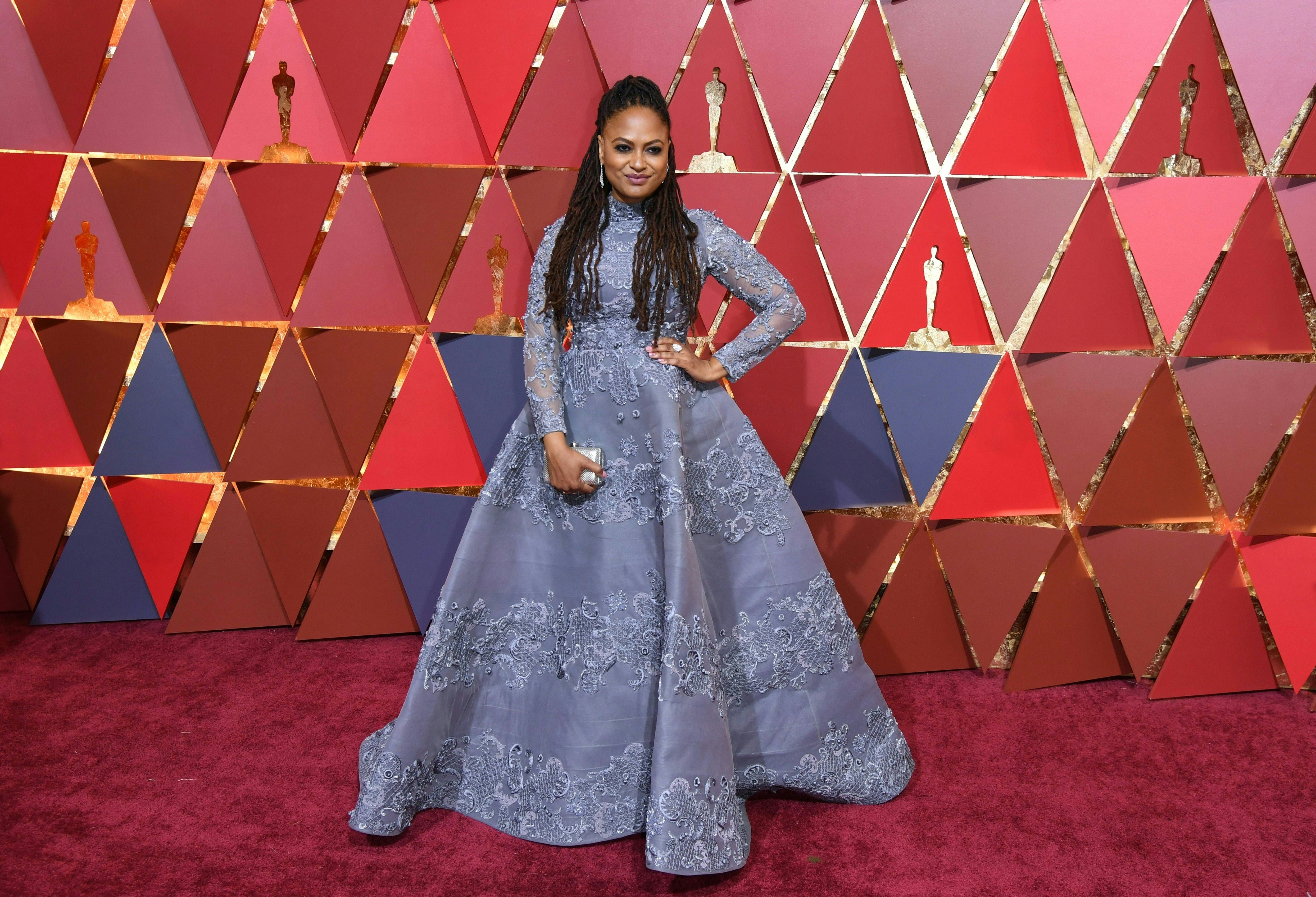‘Fashion-washing’: How Saudi Arabia is using couture to improve its reputation
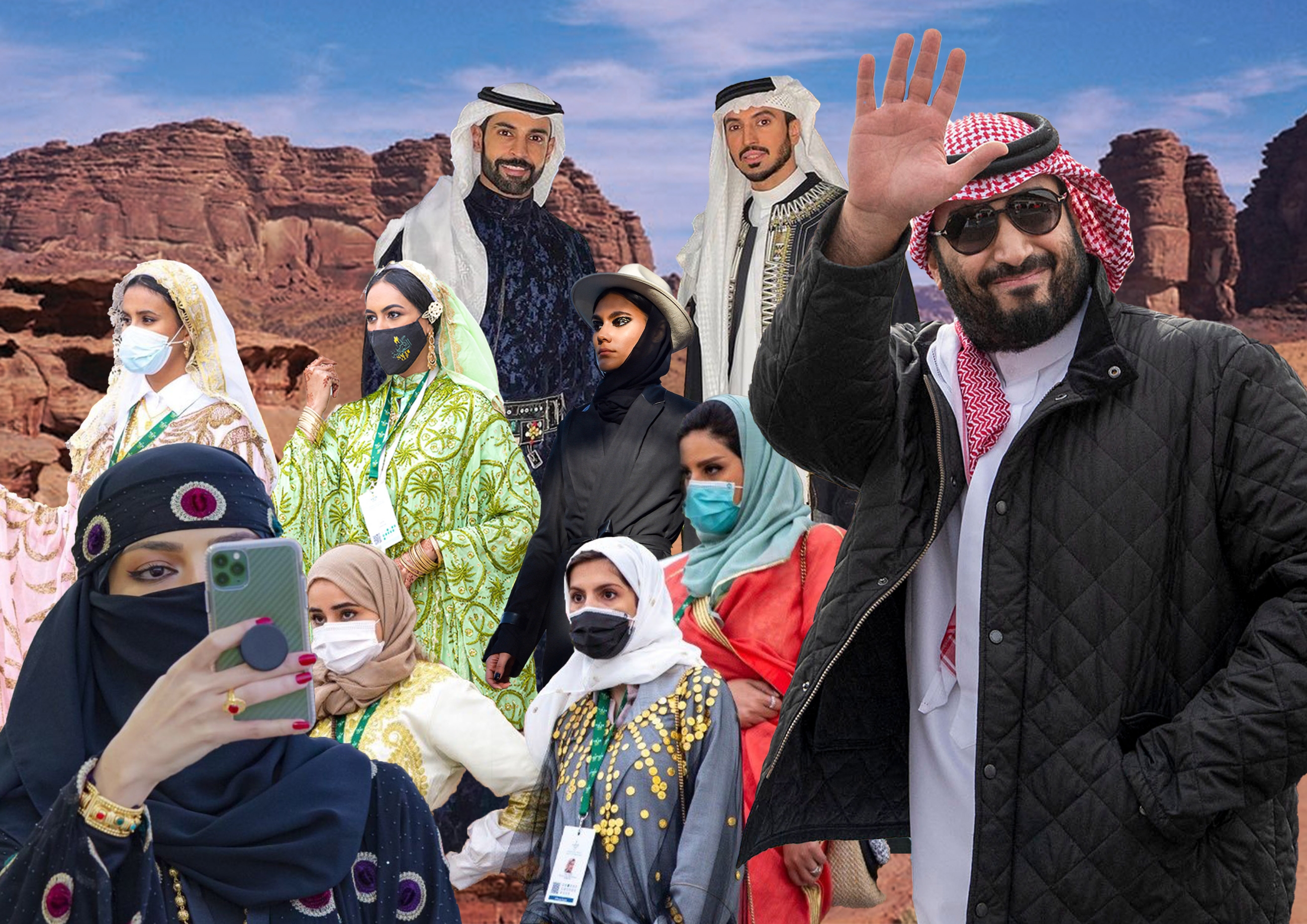
Milan, Paris, London and New York have long been known as the fashion capitals of the world - but Saudi Arabia’s futuristic and highly controversial megacity Neom aims to join them.
Saudi Crown Prince Mohammed bin Salman’s Vision 2030 strategy to diversify the country’s oil-dependent economy has already ventured into the entertainment sector, with billions of dollars spent hosting major sporting and cultural events.
Heavyweight boxing matches, electronic dance music festivals and even Halloween celebrations have reached the kingdom, seeking to present a modern face to the ultra-conservative kingdom at the initiative of the crown prince, also known by his initials MBS.
Now, fashion is serving as the latest arena for Saudi Arabia to seek to improve its international reputation.
From licensing Saudi editions of prestigious fashion publications to hosting catwalks and glamorous photoshoots with stunning backdrops, there has been a concerted effort in recent months, backed by Saudi royals, to insert Riyadh into the global couture conversation.
New MEE newsletter: Jerusalem Dispatch
Sign up to get the latest insights and analysis on Israel-Palestine, alongside Turkey Unpacked and other MEE newsletters
However, activists and campaigners told Middle East Eye that such efforts amount to “fashion-washing” and mark the latest attempt by the Saudi government to deflect attention away from its human rights abuses.
Saudi lifestyle magazines
Earlier this month, Harper’s Bazaar Arabia made history as it announced it would be the first international luxury fashion and lifestyle magazine to be published in the kingdom.
The launch of the quarterly magazine, which intends to open "a new chapter for luxury fashion and creative industries", has been endorsed by members of the Saudi royal family.
“I am excited that fashion publishing in the kingdom increases opportunities for cultural professionals and will lead to more jobs,” Princess Noura bint Faisal al-Saud, the founder of Saudi Fashion Week, told Harper’s Bazaar.
“Fashion publishing has the potential to be a strong platform upon which to narrate the story of Saudi’s homegrown fashion talents and encourage cultural exchange.”
Influential men’s culture and lifestyle magazine Esquire Middle East soon followed suit, announcing that it would be launching Esquire Saudi.
“Inspired by Vision 2030, the creative industry in the kingdom of Saudi Arabia is beginning to flourish. So it is our great honour to announce the launch of Esquire Saudi - the first international men’s magazine to be published in Saudi Arabia,” it said in a statement.
The two new magazines will be bilingual, and run by editorial teams based in Riyadh.
The launches are set to be accompanied by a series of exclusive private events throughout the year, including luxury VIP soirees and workshops from global experts in the fashion industry.
Laundering women's rights abuses
Not everyone has been impressed by the kingdom’s foray into fashion publishing, however.
“These fashion publications contribute to portraying Saudi Arabia under a glamorous light, which is far from reality," Ines Osman, director of MENA Rights Group, told MEE. "‘Fashion-washing’ is definitely part of the kingdom's strategy to distract from other issues.”
Critics have previously accused the kingdom of attempting to use entertainment to brush over human rights abuses - including through "sportswashing" and hosting concerts. Now, the fashion and publishing sectors are coming under the spotlight.
“It does not mean much to show off these beautiful landscapes when so many Saudis cannot enjoy them because they've been imprisoned, or living in exile because of travel bans,” Osman said.
“Just like it doesn’t mean much to have the first ‘Saudi model’ pose in photos when women are still considered second-class citizens.”
Sarah Leah Whitson, the executive director of DAWN, an organisation that promotes democracy and human rights in the Middle East and North Africa region, called on the fashion industry to take more responsibility and not allow itself to be exploited.
“I think the real question is why the international fashion industry, from Harper’s Bazaar and so on, is allowing itself to be used in this way,” she said.
“Given Harper’s Bazaar’s commitment to empowering women and promoting the voices of women - is it going to take responsibility for its exploitation in this way and is it going to cover the stories of women’s detention and restrictions on women’s freedoms that continue in the kingdom?”
Last month, prominent women’s rights activist Loujain al-Hathloul was released from prison after she spent over 1,000 days in detention. However, a number of other women, from bloggers to vocal activists, still remain behind bars for their peaceful campaigning.
According to a report released by Human Rights Watch, Saudi authorities have continued to repress dissidents, human rights activists and independent clerics over the years.
“We want people to be able to have fashion shoots in Saudi Arabia and for women to wear what they want, these are positive things. The problem is when they are used to hide and deflect from the face of oppression in the kingdom,” Whitson added.
She said that publications that had launched in the kingdom were doing a disservice to their readers by misrepresenting the reality of women’s lives in Saudi Arabia.
“Businesses and media establishments like fashion magazines have a human rights responsibility to not be contributing to abuses, and they need to do their due diligence to examine whether or not their promotional publications about Saudi Arabia are contributing to the cover-up of what’s actually happening to women.”
Whitson called for media in the kingdom to ensure they write about the “reality” of issues related to women, rather than be part of the covering up of rights abuses.
Glamour amid displacement
Both Harper’s Bazaar and Esquire launched their new Saudi editions accompanied by photoshoots in the desert, with the new city Neom providing a striking backdrop.
'This project... is built on our blood and bones'
- Alya Al-Howeiti, London-based Saudi dissident
Neom, which will cost hundreds of billions of dollars and is due for completion in 2025 on the Red Sea coast in the northwestern Tabuk province, is claimed to be 33 times the size of New York City once complete.
The highly ambitious project has drawn ire and sarcasm from social media users, particularly over details such as flying taxis, cooking robots and a questionable plan to built the city on a 170km straight line.
Harper’s Bazaar’s editorial for the launch shoot spoke glowingly of the new city, describing it as “a photographer’s dream - a cornucopia of the best nature has to offer, but in one spot”.
It featured photographs of Saudi model Taleedah Tamer posing by mountain ranges, coral reefs and even beside an abandoned seaplane.
However, the article failed to mention any of the controversy surrounding the project.
Last year, construction of the Neom megacity came under fierce criticism after Abdulrahim Al-Huwaiti, a Saudi tribal activist, was shot dead for protesting against his eviction in order to build and expand the city.
The Howeitat tribe has lived in Saudi Arabia’s Tabuk province for centuries, however many are being expelled from their homes to make way for the megacity.
“It’s really so disappointing to see the big names and big magazines going to Neom and taking part in this facade. Shame on you,” Alya Al-Howeiti, a London-based Saudi dissident and member of the Howeitat tribe, told MEE.
“The whole world knows about Abdulrahim al-Huweiti and what’s happening to the Howeitat. We’ve been campaigning for justice for Neom victims and we’ve sent letters to all those investing in the project. We will send [letters] to these magazines too.”
Howeiti urged the fashion industry not to “invest in this project, which is built on our blood and bones”.
“MBS is wasting money for stupid things. We have problems with hospitals and education and he isn't prioritising this, but giving it to the supermodels to do some events for very rich people,” she said.
“Magazines are damaging their reputation by supporting MBS’s fantasy vision.”
Partnerships cause a stir
In addition to launching Saudi versions of well-known lifestyle titles, the kingdom has also run content partnerships with fashion-oriented publications.
Earlier this month, Teen Vogue, an online fashion and celebrity site aimed at teenage girls, was criticised after it posted a sponsored article by the Saudi Tourism Authority.
The article “Why Saudi should land on every culture lover’s radar” was originally published by Conde Nast Traveller, and appeared on the homepage of Teen Vogue.
Several social media users raised concerns about the publishing of sponsored Saudi state content just weeks after the release of a declassified report which found MBS responsible for the murder of journalist Jamal Khashoggi.
The piece was ultimately removed by Teen Vogue, which blamed it on an “error”.
Its sister publication Vogue Arabia has also partnered with the Saudi state in recent months.
The December 2020 edition of Vogue Arabia carried a letter titled “The future is promising for Saudi women” written by Princess Reema bint Bandar, the Saudi ambassador to the US and great granddaughter of the kingdom’s founder, Ibn Saud.
The princess told Vogue’s readers that there had never been “a more promising, more optimistic time to be a young woman in Saudi Arabia than right now”.
“Barriers are being replaced by opportunity. Cultural limitations are giving way to social transformation,” she said, citing the lifting of a ban on women driving and the abolition of the guardianship system, among several other reforms.
The article appears to have come about as a result of a lobbying effort from Hathaway Strategies, an Indianopolis-based public affairs firm which advocates on behalf of the Saudi embassy.
Filings under the Foreign Agents Registration Act show that several emails were sent in December by Hathaway employees under the topic of “Vogue Article - Women's Evolution in KSA”.
Between July and December last year, Hathaway received $75,000 from the Saudi embassy in consulting fees.
Vogue Arabia has previously come under fierce scrutiny after it featured Saudi Princess Hayfa bint Abdullah al-Saud on the cover of an edition celebrating trailblazing women.
Many called out the magazine for celebrating the lifting of the driving ban on women while forgetting to mention the Saudi women’s rights activists who first championed the cause. Several of those activists were subsequently imprisoned.
Middle East Eye approached Harper’s Bazaar, Esquire and Vogue for comment on their Saudi content partnerships and activities in Neom, however none replied by the time of publication.
Catwalks and mixed gender audiences
Meanwhile, catwalks and runways have increasingly formed part of Saudi Arabia’s fashion strategy.
In January, a rare private catwalk event was hosted at the Belgian residence in Riyadh’s diplomatic quarter.
Saudi Princess Safia Hussein Guerras, the designer of the "khaleeki chic" (stay chic) abaya collection, collaborated with Belgian designer Christophe Beaufays to showcase abayas that blended traditional pieces with a modern twist.
On the runway, models showcased abayas that had been reinvented to incorporate western designs, with bright colours and embellishments.
The classic all black and fully closed abaya, which is typically worn in the kingdom, was restyled, with open-front designs and shorter hemlines to show off high heels. Models also wore loosely draped scarves over their head, paired with heavy eye makeup.
The catwalk garnered significant attention, particularly due to the mixed-gender audience. Typically, such events in the conservative kingdom would be restricted to a female-only audience.
In April 2018, Jean Paul Gaultier and Roberto Cavalli headlined the country’s first ever Arab Fashion Week. However, at the time the women-only event barred both men and cameras from the premises.
Later that year, a Saudi runway show sparked ridicule on social media, after clothes were modeled not by humans, but by drones, in order to respect the strict gender segregation guidelines. Many people mocked the event, comparing the flying garments to ghouls.
'Brutality goes on'
Last month, Saudi Arabia’s Ministry of Culture announced the appointment of Burak Cakmak as the CEO of the kingdom’s Fashion Commission, a move which was seen by some as further evidence of attempts to improve Riyadh’s tarnished image and diversify its economy.
Cakmak, a former dean of fashion at the Parsons School of Design at The New School in New York, will be responsible for developing the fashion sector in the kingdom, and encourage investment in the industry.
“I was honoured to have a chance to join the team at the Fashion Commission to lead the implementation of an ambitious strategy to build a robust fashion industry in Saudi Arabia,” he told Arab News. “Saudi is in a great place to become a key influencer in the region and globally.”
Cakmak’s new role will see him in charge of supporting local talent and entrepreneurs in the sector, and encourage investment into Saudi fashion.
“At the moment there is not enough information available about the creativity coming out of the kingdom to the rest of the world,” he said.
“The richness of the country’s heritage and crafts, as well as its designers, with both traditional and modern takes on Saudi fashion, is a great starting point for us to start shaping perceptions around the Saudi creative industry.”
Recent international successes of Saudi labels include designer Mohammed Khoja’s brand, Hindamme, producing a jacket displaying ‘24 June 2018’ - the date Saudi women were allowed to drive - which was acquired by the Victoria & Albert Museum in London for their permanent fashion collection.
Another Saudi fashion designer, Mohammed Ashi, designed a dress which was worn by acclaimed film director Avu Duvernay at the 2017 Academy Awards.
Despite growing interest, Cakmak has acknowledged that the commission needs to improve regulatory and financial frameworks in the industry, to allow Saudi designers and labels to “couple creativity with a sound business strategy”.
According to Business of Fashion publication, the Fashion Commission is one of 11 bodies established by the Ministry of Culture intended to manage and promote the Saudi cultural sector.
One of the commission’s most recent decisions was to join forces with the ministry of culture to create a dress code at last month's Saudi Cup, known as the world’s richest horse race.
The dress code, which was inspired by the kingdom’s fashion heritage, made headlines in Vogue Arabia and Harper's Bazaar Arabia, among other publications and websites.
Images of attendees donning intricately embroidered abayas, thobes specific to different regions and straw hats inspired by the Asir province’s heritage were shared across social media platforms, showcasing the rich and diverse cultural heritage of the kingdom.
The two-day horse racing event also attracted some criticism. Lina al-Hathloul, the sister of Loujain al Hathloul, called on British jockey Hollie Doyle to boycott the event.
In a letter to Doyle seen by The Independent, Hathloul called on the British jockey to boycott the event over the country’s mistreatment of her sister and others imprisoned for peaceful campaigning.
She also stated that such events were part of the kingdom’s attempt to cover up human rights abuses.
“The authorities and their expensive PR advisers want to use events like the Saudi Cup to show the world that the country has changed - but away from these glamorous events, the brutality goes on,” Hathloul wrote.
This article is available in French on Middle East Eye French edition.
Middle East Eye delivers independent and unrivalled coverage and analysis of the Middle East, North Africa and beyond. To learn more about republishing this content and the associated fees, please fill out this form. More about MEE can be found here.



